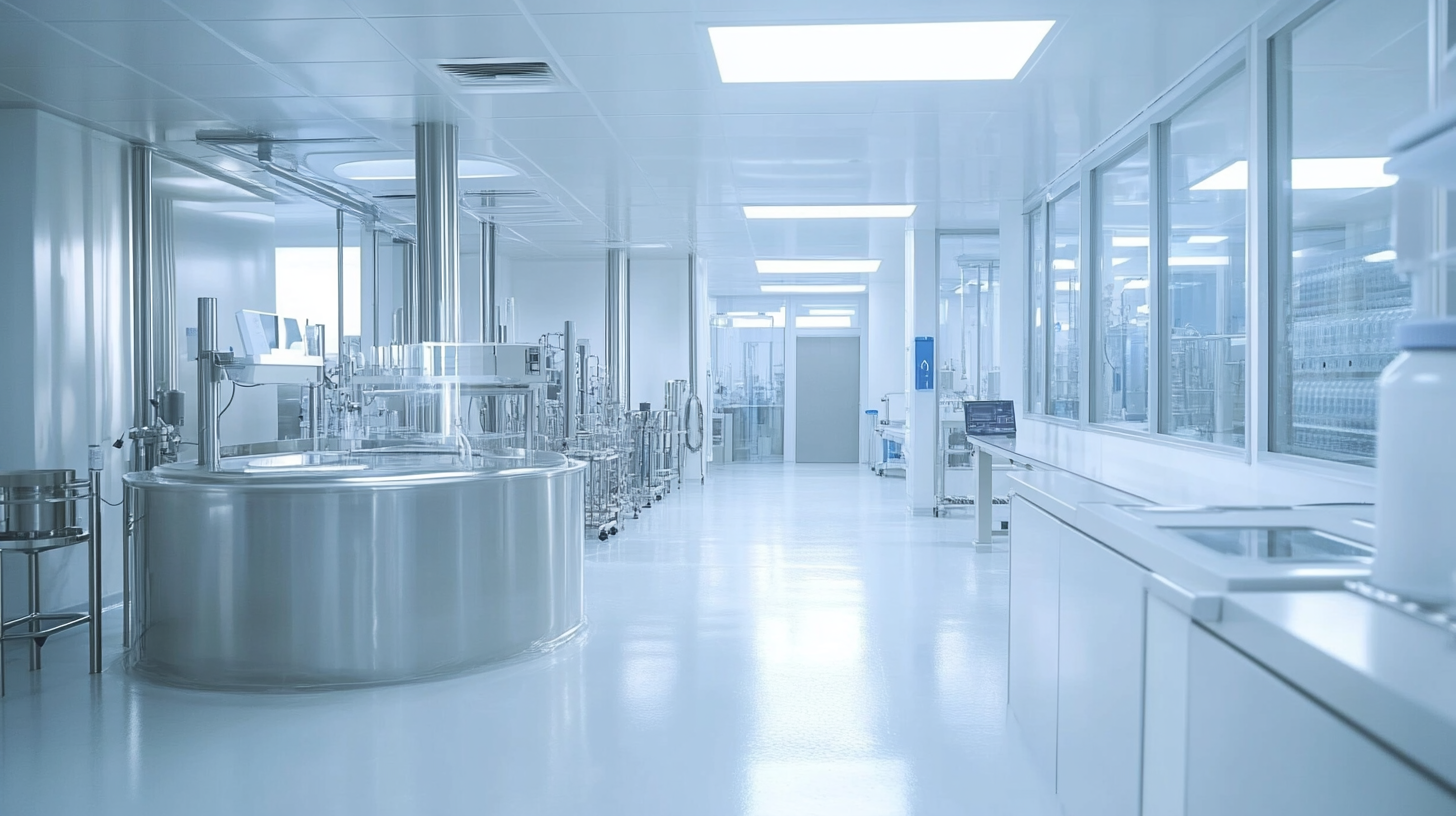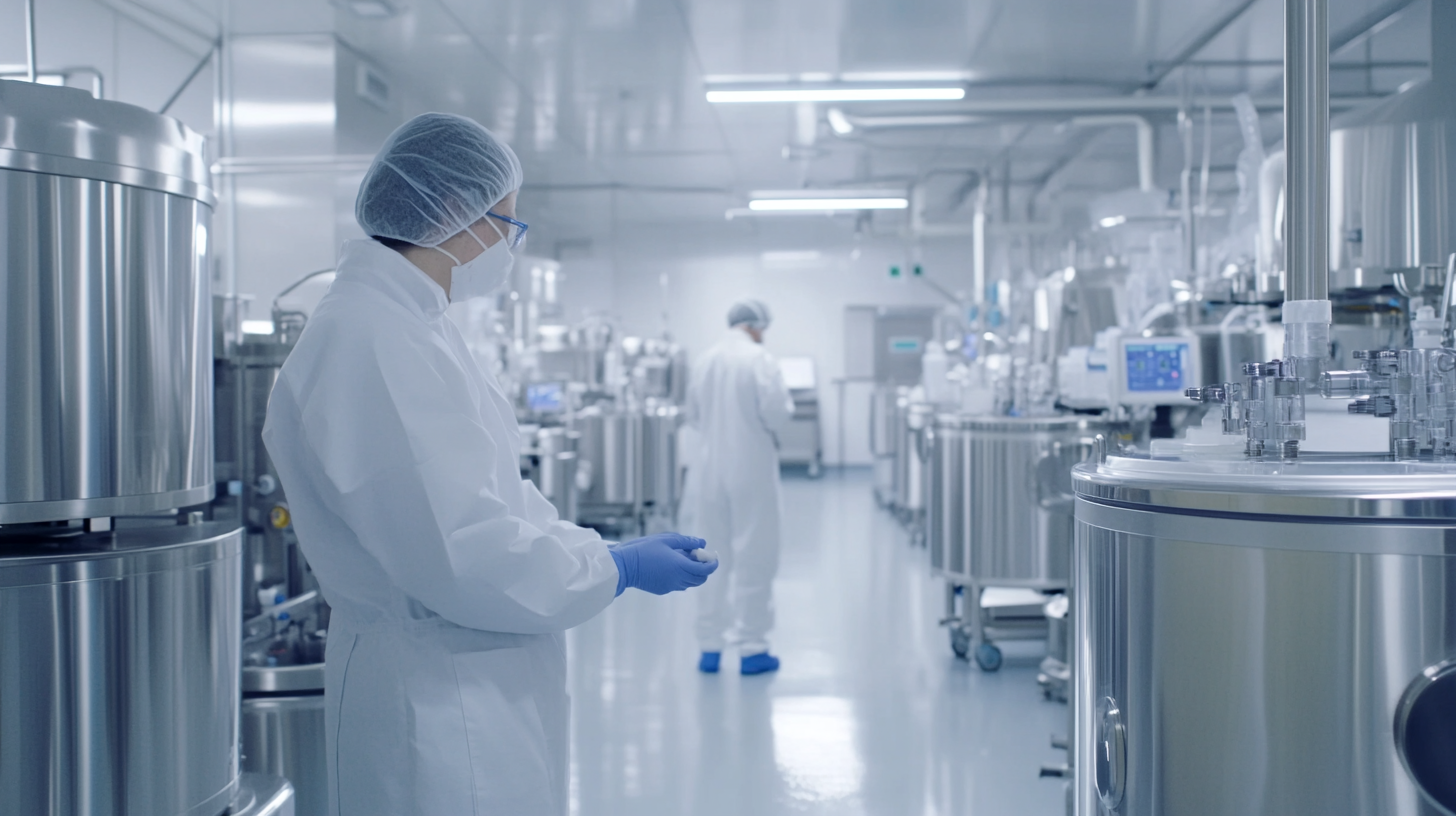
Emerging Drug Raw Material Technologies Shaping the Pharmaceutical Landscape by 2025
The pharmaceutical landscape is undergoing a transformative shift as emerging drug raw material technologies pave the way for innovative solutions and streamlined processes. As the demand for more effective and accessible medications continues to rise, the industry is exploring cutting-edge materials and methods that promise to enhance drug formulation and delivery. By 2025, these advancements are expected to redefine not only how drugs are manufactured but also the overall therapeutic outcomes and patient experiences.
In this evolving context, understanding the role of drug raw materials becomes crucial. These foundational elements not only influence the efficacy and stability of pharmaceuticals but also hold the key to sustainability and cost-effectiveness in drug production. As we delve into the latest technologies and trends shaping this sector, it is essential to grasp how they will impact both manufacturers and consumers alike. This blog will explore the innovative drug raw material technologies set to revolutionize the pharmaceutical industry over the next few years, providing insights into their implications for healthcare and beyond.

Advancements in Synthesis Techniques Revolutionizing Drug Raw Material Production
The pharmaceutical industry is on the brink of transformation, driven by innovative synthesis techniques that are revolutionizing drug raw material production. Emerging technologies, particularly in microfluidics-assisted chemical synthesis, are enhancing the efficiency and precision of drug formulation. By miniaturizing chemical processes, these advancements enable the rapid and scalable production of active pharmaceutical ingredients (APIs), thus significantly accelerating the drug development timeline. Furthermore, the integration of artificial intelligence into drug discovery is reshaping the landscape by automating the identification of potential drug candidates. AI systems can analyze vast datasets to predict molecular behavior, optimize synthesis routes, and streamline biological testing. This shift not only enhances productivity but also reduces costs and minimizes the environmental impact associated with traditional chemical manufacturing processes. As a result, the organic chemical market is projected to witness substantial growth, potentially reaching $26.19 billion by 2032, underlining the urgent need for technologies that prioritize sustainability and efficiency. The focus on green chemistry in recent developments emphasizes the pharmaceutical industry's commitment to environmentally friendly practices. By incorporating renewable materials and reducing harmful waste through innovative synthesis techniques, the sector is set to make a significant contribution to global sustainability efforts. As we approach 2025, these technological advancements will not only reshape drug production but will also pave the way for a more sustainable and efficient pharmaceutical landscape.

Impact of AI and Automation on Drug Raw Material Supply Chains by 2025
The pharmaceutical industry is witnessing a transformative wave driven by artificial intelligence (AI) and automation in drug raw material supply chains. As we approach 2025, reports indicate that the integration of AI could enhance supply chain efficiency by over 30%, significantly reducing lead times and costs associated with procurement and logistics. According to a recent study by McKinsey, companies that adopt AI-driven supply chain solutions can expect a 25% increase in productivity, allowing for quicker responses to market demand fluctuations.
Automation technologies, such as robotics and machine learning, are further reshaping how raw materials are sourced and processed. A report from the International Pharmaceutical Federation projects that automated systems can decrease human error rates by up to 75% in material handling and processing, ensuring higher quality and consistency in drug manufacturing. Moreover, these innovations enable real-time monitoring and data analytics, contributing to more strategic decision-making and overall risk management in supply chains.
As these technologies evolve, the sustainability of raw material sourcing is also becoming a focal point. Insights from the World Health Organization emphasize that implementing AI and automation can lead to more environmentally friendly practices, reducing waste and improving traceability. By optimizing supply chains, pharmaceutical companies are not only enhancing operational efficiency but also aligning with global sustainability goals, thus preparing for a more resilient future by 2025.

Emerging Green Chemistry Practices in Pharmaceutical Raw Material Manufacturing
The need for sustainable practices in pharmaceutical manufacturing has never been more critical, prompting a shift towards emerging green chemistry technologies. These practices focus on reducing the environmental impact of drug raw material production while enhancing efficiency and safety. By implementing renewable resources and innovative chemical processes, pharmaceutical companies are increasingly able to minimize waste and energy consumption.
One of the key aspects of green chemistry is the design of chemical syntheses that are not only efficient but also benign to the environment. For instance, using solvent-free reactions or biomass-derived feedstocks can significantly lower the ecological footprint of drug manufacturing. Companies that prioritize these practices are likely to achieve a competitive advantage, as regulations tighten and consumer preferences shift towards sustainability.
Moreover, the integration of green chemistry principles into raw material sourcing can lead to breakthroughs in pharmaceutical innovation. The adoption of advanced materials, such as biodegradable polymers and catalysts, can optimize production workflows and enhance product quality. As the pharmaceutical landscape evolves, those who embrace these emerging technologies will be better positioned to meet the challenges of a rapidly changing market and secure a healthier planet for future generations.

Market Trends: Projected Growth of the Global Drug Raw Material Market by 2025
The global drug raw material market is on the brink of significant transformation, projected to experience robust growth by 2025. As the pharmaceutical industry evolves, the demand for high-quality raw materials—critical for the development of effective medications—is skyrocketing. This trend is driven by several factors, including the increasing incidence of chronic diseases, the rising demand for personalized medicine, and advancements in technology that streamline the production of active pharmaceutical ingredients (APIs).
One of the key market trends shaping this growth is the shift towards sustainable and eco-friendly raw material sourcing. Pharmaceutical companies are increasingly focusing on reducing their carbon footprint and adhering to stringent regulatory requirements. This change is not only beneficial for the environment but also ensures long-term viability for the companies involved. Additionally, innovations in biotechnological processes are enabling the production of more complex molecules with higher efficacy and reliability, setting new standards in drug formulation.
Moreover, regions such as Asia-Pacific are emerging as major players in the drug raw material market, thanks to lower manufacturing costs and an abundance of resources. As globalization continues to influence the pharmaceutical supply chain, companies are also diversifying their sourcing strategies to mitigate risks associated with geopolitical tensions and supply disruptions. This strategic shift is expected to create a competitive landscape, prompting companies to invest in research and development focused on novel raw material technologies that meet evolving market demands.
Regulatory Changes and Their Influence on Raw Material Technologies in Pharmaceuticals
The pharmaceutical landscape is undergoing significant transformation, driven largely by regulatory changes that are influencing raw material technologies. As the industry moves toward stricter compliance standards, companies are compelled to innovate their sourcing and manufacturing processes. According to a report by Grand View Research, the global pharmaceutical raw materials market size was valued at approximately $150 billion in 2021 and is expected to expand at a compound annual growth rate (CAGR) of around 7.5% from 2022 to 2028. This growth is, in part, a response to evolving regulations that aim to enhance drug safety and efficacy.
Regulatory bodies, such as the FDA and EMA, are increasingly stringent in their requirements related to the sourcing of raw materials, promoting transparency in supply chains. This shift encourages pharmaceutical companies to adopt advanced technologies like blockchain for traceability and quality assurance purposes. A study by Deloitte highlighted that 80% of companies are investing in digital solutions to meet regulatory demands and to improve operational efficiencies. Additionally, the introduction of guidelines concerning Good Manufacturing Practices (GMP) has pushed manufacturers to seek higher quality raw materials that can withstand rigorous testing.
Moreover, changing regulations are stimulating the development of alternative materials and processes. Biopharmaceutical companies are now exploring the use of plant-based raw materials, supported by a report from MarketsandMarkets, which projects the biopharmaceutical market to reach $505 billion by 2025. This shift not only aligns with regulatory requirements but also addresses growing consumer preferences for sustainable and ethically sourced products. As we approach 2025, the pharmaceutical industry stands at a crucial juncture where regulatory influences will continue to shape the future of raw material technologies significantly.

